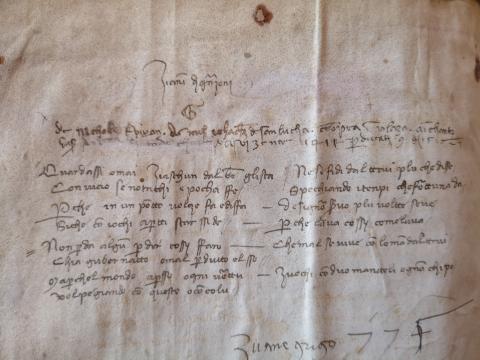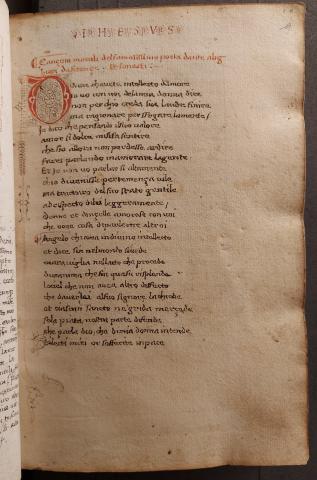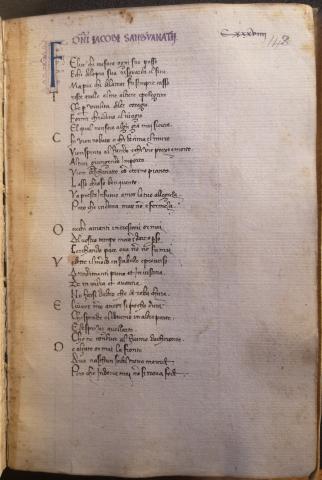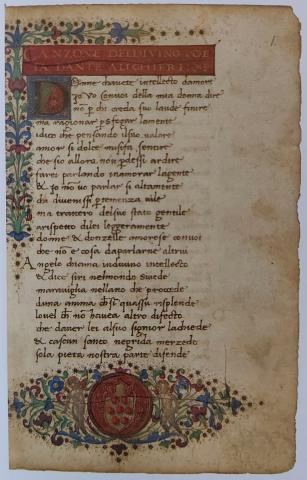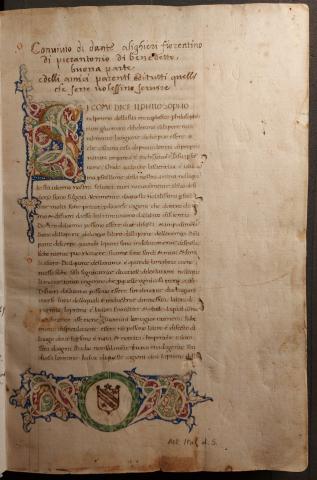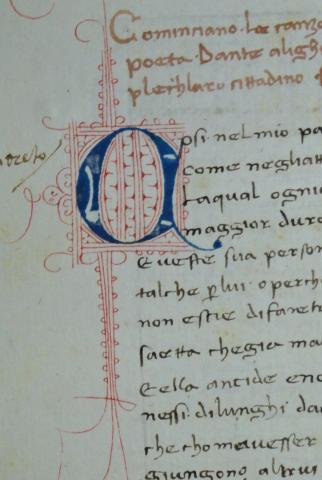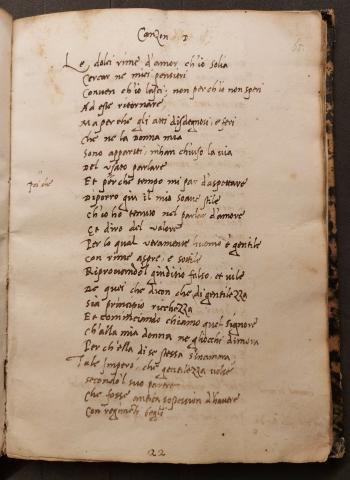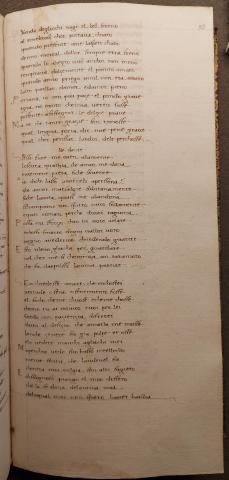Manuscripts (14th-16th century)
Manuscripts testify to Dante’s success as a lyric poet, from his desk to the sixteenth century. Dante began writing the Commedia when he was over 40 years old, after having been a protagonist in the public life of his time and vernacular lyric poet. His lyric production (more than 120 compositions in diverse forms, written ca. 1283-1315) represents the first, fundamental stage of his literary career. With more than 500 codices (the earliest of which were compiled while Dante was still writing the Commedia, such as Florence, Biblioteca Medicea Laurenziana, MS Martelli 12), his lyric poems grew into one of the most successful corpora in the history of Italian literature. Dante gathered 31 of his poems in the Vita Nuova (ca. 1292-1294) and began to comment on some of his canzoni in the unfinished Convivio (The Banquet, ca. 1304-1305), but he never systematised the other ones in any organized songbook. His poems appear in manuscript volumes which usually contain other lyric poems and other texts, in collections that might or might not have been intentionally curated. The Bodleian Library holds important examples of the kinds of manuscripts preserving Dante’s lyric poems that were created from the late fourteenth century to the first half of the sixteenth, and important copies of the Vita Nuova and the Convivio. Some are paper manuscripts compiled by middle-class readers; others are lavishly illuminated parchment codices commissioned by the elites. What is more, they represent the two focal centres of Dante’s reception: Florence and Venice.

